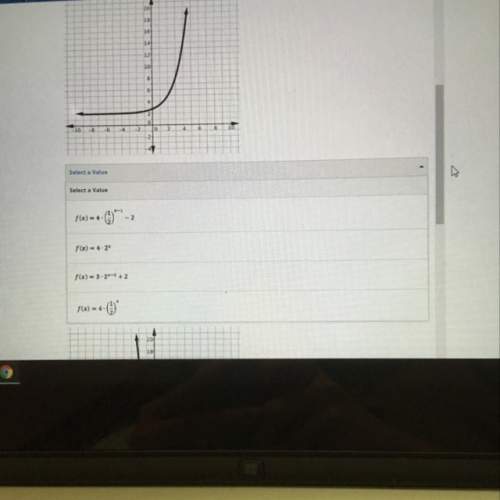
Mathematics, 09.11.2019 02:31 justritegrl
Set up an integral for finding the laplace transform of f(t)=t−6. f(s)=l{f(t)}=∫ba e^(-s*t)(t-6)dt equation editorequation editor (formulas) where a= 0 equation editorequation editor and b= inf equation editorequation editor . find the antiderivative (with constant term 0) corresponding to the previous part. equation editorequation editor evaluate appropriate limits to compute the laplace transform of f(t): f(s)=l{f(t)}= equation editorequation editor where does the laplace transform you found exist? in other words, what is the domain of f(s)? equation editorequation editor (inequalities)

Answers: 3
Another question on Mathematics

Mathematics, 21.06.2019 14:10
Which linear equations have an infinite number of solutions? check all that apply. (x – 3/7) = 2/7(3/2x – 9/14)8(x + 2) = 5x – 1412.3x – 18 = 3(–6 + 4.1x)(6x + 10) = 7(x – 2)4.2x – 3.5 = 2.1 (5x + 8)
Answers: 3

Mathematics, 21.06.2019 18:00
Name each raycalculation tip: in ray "ab", a is the endpoint of the ray.
Answers: 1

Mathematics, 21.06.2019 21:00
Mr.zimmerman invested $25,000 in an account that draws 1.4 interest, compouneded annually. what is the total value of the account after 15 years
Answers: 1

You know the right answer?
Set up an integral for finding the laplace transform of f(t)=t−6. f(s)=l{f(t)}=∫ba e^(-s*t)(t-6)dt e...
Questions



English, 10.06.2020 05:57


Mathematics, 10.06.2020 05:57

Health, 10.06.2020 05:57


Spanish, 10.06.2020 05:57


English, 10.06.2020 05:57



Mathematics, 10.06.2020 05:57




Mathematics, 10.06.2020 05:57



=\int_{0}^{\infty}e^{-st}(t-6)dt](/tpl/images/0366/4835/f0521.png)




![\bf \lim_{n \rightarrow \infty}\int_{0}^{n}e^{-st}(t-6)dt=\lim_{n \rightarrow \infty}\left[\frac{e^{-st}}{s}(6-t-\frac{1}{s}) \right]_0^{n}=\\=\lim_{n \rightarrow \infty}\left[\frac{e^{-sn}}{s}(6-n-\frac{1}{s}) -\frac{1}{s}(6-\frac{1}{s})\right]](/tpl/images/0366/4835/96807.png)
![\bf \lim_{n \rightarrow \infty}\left[\frac{e^{-sn}}{s}(6-n-\frac{1}{s})\right]=0\;(s0)](/tpl/images/0366/4835/6d6fa.png)
 for s>0
for s>0




